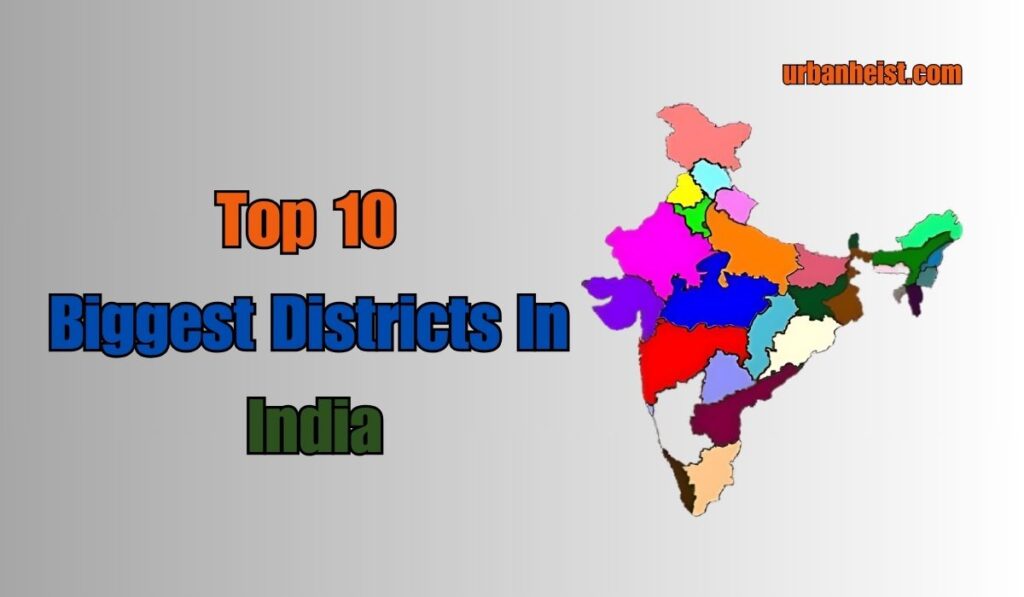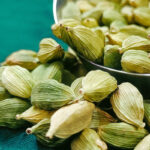India, a country with a rich cultural tapestry and diverse landscapes, boasts a staggering 766 districts as of 2024. However, some districts stand out not only for their culture and history but also for the vast areas they cover. The “Biggest Districts In India” are spread across various states, and while Rajasthan, being the largest state in India, dominates the list, other regions also contribute with their own expansive districts. If you’re curious to explore these districts, we’ll take you on a journey through the top 10 largest districts of India as of 2024, each with its unique geography, culture, and attractions.
Top 10 Biggest Districts In India
1. Kachchh (Kutch), Gujarat
Topping the list is Kachchh (Kutch), the largest district in India, covering a massive area of 45,674 square kilometers. Located in the far western part of the country, Kutch is synonymous with its iconic white salt desert, the Rann of Kutch. During the dry season, the landscape transforms into a surreal white expanse, attracting tourists from across the globe. The district’s natural beauty is complemented by its cultural heritage. The Great Rann and Little Rann of Kutch are not just scenic spots but also home to diverse wildlife. Kutch also plays host to the Rann Utsav, a vibrant festival showcasing Gujarat’s culture, folk music, and arts. Tourists, both domestic and international, flock to this region to experience its unique charm.
2. Leh, Ladakh
Following closely behind is Leh in the Union Territory of Ladakh, with an area of 45,110 square kilometers. Leh is a district renowned for its rugged mountains, high-altitude deserts, and a strong influence of Tibetan culture. It houses some of the most significant Buddhist monasteries in the region, which are pilgrimage sites for many. The landscape of Leh is awe-inspiring, with endless opportunities for adventure sports such as trekking, river rafting, and mountain biking. Additionally, the Hemis Festival, celebrated in Leh, adds a burst of color to the region, with traditional music, dance, and spiritual practices on full display.
3. Jaisalmer, Rajasthan
Ranked third is Jaisalmer, often referred to as the “Golden City,” which covers 38,401 square kilometers in the Thar Desert. The district is famous for its golden sandstone architecture, particularly the Jaisalmer Fort, a UNESCO World Heritage Site. Jaisalmer’s buildings and fort appear to glow like gold under the desert sun, attracting thousands of tourists. The Desert Festival, held annually, is a must-see event, where Rajasthan’s rich traditions, music, and dance come to life. With camel rides and folk performances, Jaisalmer offers an immersive desert experience.
4. Bikaner, Rajasthan
Fourth on the list is Bikaner, another large district in Rajasthan that covers 30,239 square kilometers. Located close to the Pakistan border, Bikaner is steeped in history, reflected in its impressive structures like the Junagarh Fort. One of its unique attractions is the Karni Mata Temple, also known as the Rat Temple, which is home to thousands of revered rats. Bikaner is also famous for its Camel Breeding Farm, the largest of its kind in Asia. And of course, no mention of Bikaner is complete without its famed Bikaneri Bhujia, a spicy snack enjoyed by many.
5. Barmer, Rajasthan
Barmer, another district from Rajasthan, occupies the fifth spot with an area of 28,387 square kilometers. Situated in the Thar Desert, Barmer may appear arid, but it’s a vibrant region with flourishing agriculture, thanks to modern farming techniques. The district is renowned for its folk music and dance, which hold a deep cultural significance. Barmer is also known for its exquisite handicrafts, especially wood carving and pottery, which are a major part of the local economy.
6. Jodhpur, Rajasthan
The sixth largest district in India is Jodhpur, covering an area of 22,850 square kilometers. Known as the Blue City, Jodhpur is famous for its blue-painted houses that surround the Mehrangarh Fort. The district is a cultural epicenter and offers visitors a blend of historical charm and modern-day vibrancy. Jodhpur is not only a tourist attraction but also an important cultural hub, offering a glimpse into the heart of Rajasthan.
7. Anantapur, Andhra Pradesh
Moving south, Anantapur in Andhra Pradesh is the seventh-largest district, spanning 19,130 square kilometers. Known for its arid climate and rugged landscapes, Anantapur also holds significant historical importance. It is home to Lepakshi Temple, a fine example of Vijayanagara architecture. Despite its dry terrain, Anantapur is an important agricultural region, thanks to its large-scale farming of crops like cotton and groundnut.
8. Mahbubnagar, Andhra Pradesh
Next up is Mahbubnagar, also known as Palamoor, covering 18,432 square kilometers in Andhra Pradesh. The district is a blend of history and modern development. It houses important historical sites like the Jogulamba Temple, while also being a key agricultural region. Proximity to Hyderabad has led to the growth of small-scale industries, making Mahbubnagar a fast-developing district with a bright future.
9. Nagaur, Rajasthan
Occupying the ninth spot is Nagaur, a district in Rajasthan covering 17,718 square kilometers. Nagaur is not only vast but also deeply rooted in its agricultural heritage. The district hosts one of the largest cattle fairs in India, drawing visitors and traders from all over the country. Bajra (pearl millet) and wheat are the primary crops grown in this district, making it an important agricultural hub in Rajasthan.
10. Kurnool, Andhra Pradesh
Rounding out the list is Kurnool in Andhra Pradesh, with an area of 17,658 square kilometers. Known for its historical significance, Kurnool is home to the Kurnool Fort and the mysterious Belum Caves, which are popular tourist attractions. Additionally, the presence of rivers like Tungabhadra and Handri ensures fertile land, making Kurnool a key agricultural district in southern India.
Conclusion
In conclusion, the “Biggest Districts In India” offer more than just vast land areas; they are a reflection of the country’s diverse geography, culture, and history. From the white salt deserts of Kutch to the rugged mountains of Leh, each district has its own unique charm and significance. Whether you are a traveler, historian, or adventure enthusiast, these districts offer something for everyone. Exploring these regions not only provides insight into their sheer size but also the rich traditions and stories they carry forward into the present day.


